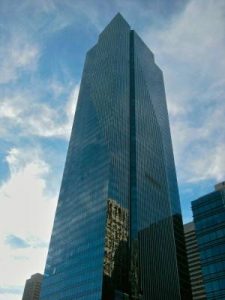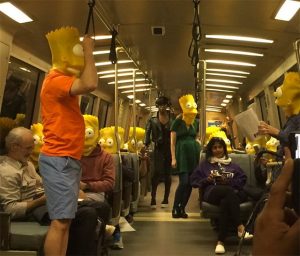The Millennium Tower is the tallest and most luxurious residential building in San Francisco. The 58 story Millennium Tower opened for business in 2008. It is located in the financial district and is home to many high tech multimillionaires and San Francisco celebrities, including Joe Montana and Giants star Hunter Pence. It is understandable why people like that live here. The Millennium Tower has a long list of incredibly luxurious amenities. Predictably, if you want to live in the Millennium Tower, you need to have very deep pockets. These condos are very expensive. Some units have sold for $10 million. Hunter Pence paid $4 million for his condo. 
That Sinking Feeling. Unfortunately, the Millennium Tower is sinking. The tower was built on land that was, at one time, under San Francisco Bay, and bedrock is very far down. Beneath the Millennium Tower is almost 200 feet of mud and sand. Because of this, most of the high-rise buildings in this area have steel pilings under them that go down to bedrock. However, in order to save money on construction costs, the builders of the Millennium Tower did not drive pilings down to bedrock. Instead, they only drove pilings down 80 feet. As the result, the Millennium Tower is built on dense sand, not bedrock. That is why the building is sinking. Since its opening 8 years ago, the Millennium Tower has sunk 16 inches, and it is still sinking. To make matters worse, the building is not sinking evenly. The Millennium Tower is sinking faster on the north side than the south side. As a result, the building now leans 2 inches towards the north. The Millennium Tower is in no imminent danger of collapse, but if the sinking and tilting continue, the building may have to be torn down. Sounds unbelievable, doesn’t it?! What can be done? Well, engineers are trying to figure out a way to stop or at least slow down the rate of sinking and tilting, but it isn’t certain that anything can be done. One thing is certain. There will be a lot of lawsuits over this mess, and some lawsuits have already begun. Some of the condos in this building belong to San Francisco’s best lawyers, and needless to say, anyone can afford to live in the Millennium Tower can also afford to hire a lawyer, and a very good one too.
Prices. The sinking and tilting seem to have had little effect – thus far – on the prices of condos in the Millennium Tower. The real estate market in downtown San Francisco is so hot that buyers are willing to overlook ‘minor defects’ (as one realtor put it) such as the sinking and tilting. To give you an example, unit #502 in the Millennium Tower is currently for sale. It is the most expensive one-bedroom condo currently for sale in San Francisco. In 2012, it sold for $1.8 million. It is now priced at $3.8 million. It is a spacious unit, but still, that’s an awful lotta money for a 1 bedroom apartment! The HOA (Home Owner Association) fees are also pretty stiff here and can run several thousand dollars a month, depending on the size of your unit.


